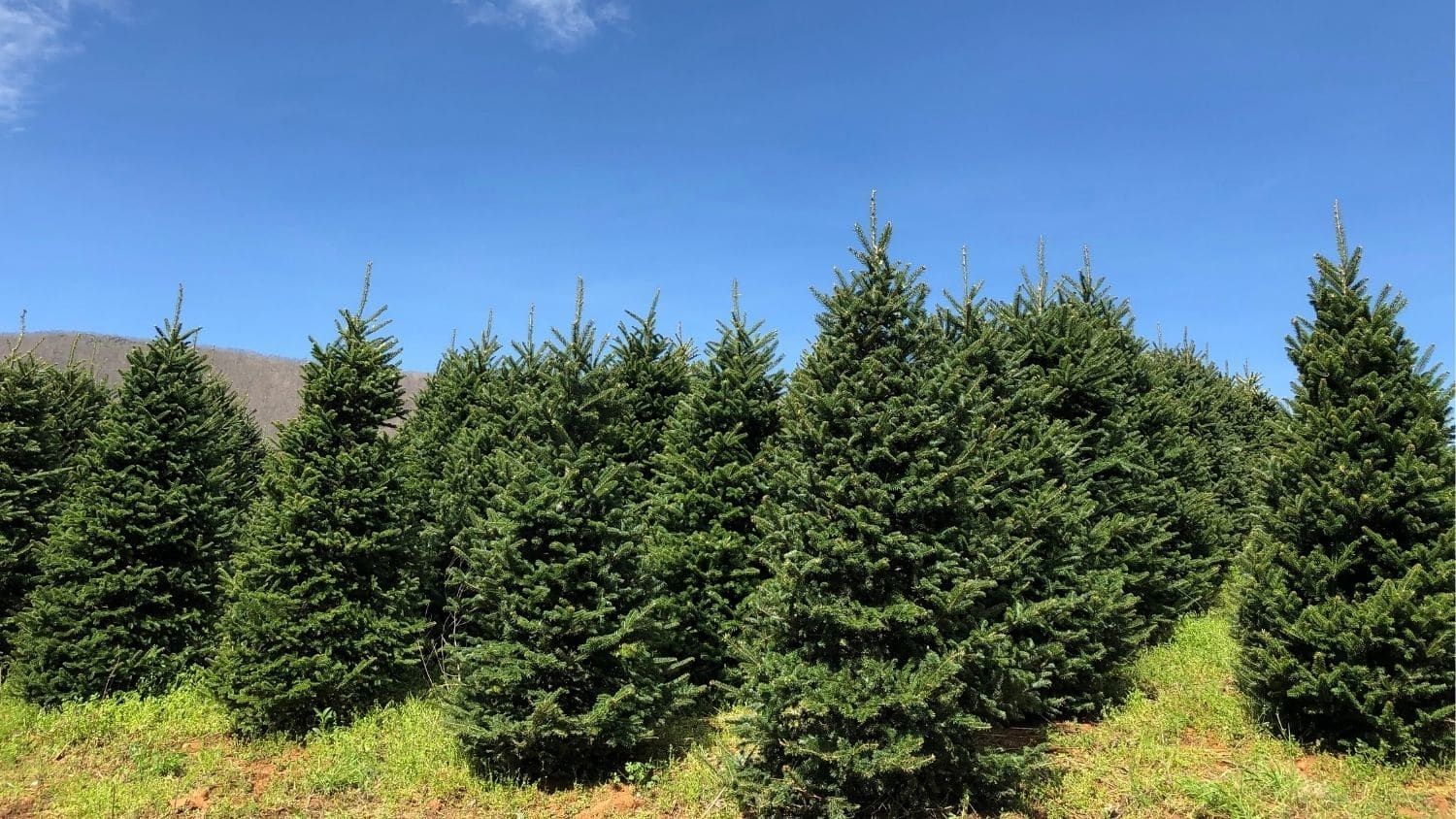North Carolina’s Christmas tree growers are busy harvesting to prepare to supply roughly 5 million trees by Thanksgiving – hustling to meet a demand that experts think will be high this year.
“North Carolina customers should consider themselves among the luckiest in the United States,” said Travis Birdsell, an extension agent for NC State who works directly with Christmas tree farmers in the state. “They’re close to one of the largest Christmas tree growing regions in the United States. A lot of the stores are supplied directly by growers, so they have a direct supply of trees.”
The Abstract spoke with Birdsell about factors influencing the supply and demand of live Christmas trees in North Carolina. He works directly with Christmas tree farmers in Ashe County, North Carolina, which has ranked among the top Christmas tree producing counties in the nation. In 2017, there were nearly 1.9 million Christmas trees cut in the county, according to the National Agricultural Statistics Service.
The Abstract: How would you describe the supply of real Christmas trees in North Carolina this year compared to prior years?
Travis Birdsell: North Carolina is the largest Christmas tree producing region east of the Rockies and we’re sending out about the same amount of trees as we have in the past several years, so I would say our supply is the same. It’s the demand that has gone up. We continue to get more and more phone calls trying to fill orders across the country.
TA: What factors are impacting demand?
Birdsell: We may see some regional fluctuations in tree demand based on holiday travel. When we were all staying home last year, a lot more people opted to include a real tree in their Christmas traditions. And if supply can’t increase, then it will look like we are short.
TA: How fast can farmers grow new trees to respond to demand?
Birdsell: Part of the reason we can’t respond quickly to an increase in tree demand is due to the growing cycle. Christmas trees are on an eight-to-10-year growing cycle. If you look eight to 10 years back, we were just coming out of the Great Recession. People had to make some tough decisions and putting up a real Christmas tree was a bit of a luxury item then. Some went without a Christmas tree at all.
TA: Are transportation issues impacting N.C. growers?
Birdsell: I don’t see transportation issues affecting the tree industry as much, since our industry doesn’t rely on container ships to import from overseas. However, trucking is an issue that is affecting everything in our country. It is not an availability of trucks, but rather a shortage of truck drivers. This has led to an increase in price per mile. The increase in freight prices could lead to a small increase in the prices of trees this year. Transportation is somewhat challenging, but we benefit from a longstanding relationship with our truckers.
TA: Which species are abundant, and where?
Birdsell: In the mountains of North Carolina, Fraser fir is the primary species grown. Fraser firs represent about 94% of the Christmas trees grown in North Carolina. The piedmont and eastern North Carolina regions make up that other percentage and grow a variety of other species because Fraser firs cannot grow in those climates.
TA: How will N.C.’s cut-your-own farms fare?
Birdsell: Choose-and-cuts have a set amount of land, and they grow the same amount on that land every year. What happens though is that people can’t find a tree at their usual retail lot, and then they decide to go to a choose-and-cut. They start getting hit harder and harder.
TA: Are N.C. growers expecting to see any impact from any supply issues related to drought and high temperatures on the West Coast?
Birdsell: We typically don’t ship over the Rockies that much, but we do get quite a bit of West Coast cedar shipped here for greenery and garland. So, the western high temperatures allowed our growers to have a conversation with their suppliers, and we really haven’t had many issues.
My coworkers and I took a trip out to Oregon in September to look at the impact of the drought and record temperatures on their trees. Christmas trees, especially our fir species, are very temperature sensitive. They’re really remnants from the ice age and an indicator for climate change. While we were out in Portland, there were forest trees 100 feet tall that were red on one side, scorched from the heat. That’s going to be the issue on the West Coast, but I think it’s better than they thought.
TA: When should people start looking for a tree?
Birdsell: For the greatest selection and availability, people should plan to find their tree within the first two weeks of the Christmas tree shopping season, which starts after Thanksgiving. They’ll probably close by mid-December. This is a good year to maybe try something new – whether that’s a new size or a new species – if you can’t find what you’re looking for. Natural trees, which are more layered, should be in good supply this year. Also, you should call ahead – whether it’s to the retail lot or a cut-your-own farm.
TA: What should people in the Triangle know?
Birdsell: The owners of Peak Farms, a farm in Ashe County, are supplying a tree for the White House Blue Room, and the farmers will also have trees at the State Farmer’s Market this year. The Triangle will be in good shape. It may not be as easy as running to your traditional retailer or the lot down the street, but there will be a lot of trees coming to the area this year.
This post was originally published in NC State News.
- Categories:


